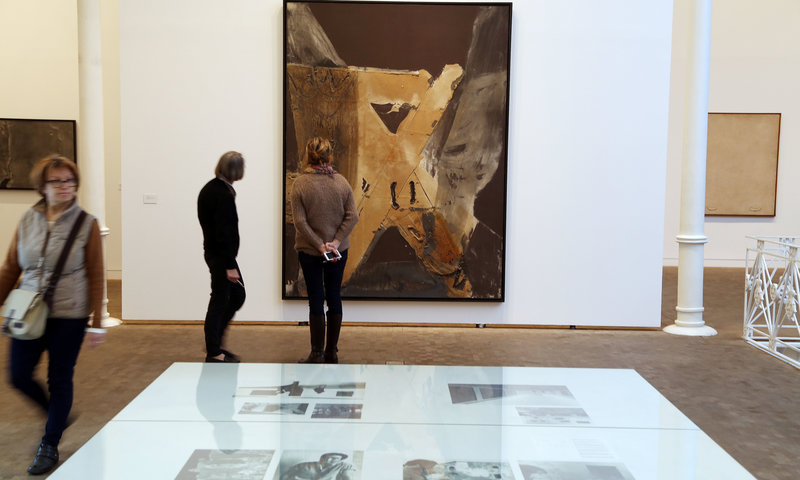How Tàpies found his voice
An exhibition in the artist's foundation in Barcelona traces the development of art autre and its influence on the Catalan painter's work in the postwar period
At the start of the 1950s, some artists opted to put the emphasis on gesture, procedure and action rather than narration. It was purely about material, paint splashes, the use of their bodies as a tool of painting, the focus on the action of painting to the point that artists took their work on to the street or even supermarkets.
The French art critic, Michel Tapié, intelligently found the point of connection between these revolutionary artists and tied together the aesthetic that came out of this attitude with the idea of therapeutic art made people with mental illnesses.
Thus was born the concept of art autre, “Art of Another Kind”, that came to have a huge impact on a young Antoni Tàpies and which would eventually become Art Informel. This was what Tàpies was experiencing at a time of emergency in his career, which is explained in the exhibition, Documents d'acció. Obres de les col·leccions Denney i Cordier (1947-1955), which opened last month in the Fundació Tàpies, with works from Les Abatttoirs gallery in Toulouse.
Radical goup of artists
Through the artists representative of the period, such as Lucio Fontana, Jean Dubuffet, Karel Appel, Alberto Burri, Georges Mathieu, Roberto Matta or the Japanese Gutai group, the exhibition shows how quickly these radical artists won over art collectors. In many bourgeois households, Art Informel paintings began to appear alongside more traditional works.
Anthony Denney, photographer and editor of such magazines as Vogue, began to photograph his own apartment, with Informel paintings on the walls, for his publications. Many of these photos and the paintings in them are in the exhibition, with other singular works, such as The Battle of Hastings (1956), painted in a London street.
Gutai was the Japanese version of the movement, with its members carrying out enactments of their work in parks, theatres or publicly in their workshops. They were the pioneers of the “happening”, and the exhibition has some of their works, such as one that Kazuo Shiraga painted with his feet.
It was in this international context that Tàpies discovered his own language, which is explained on the first floor of the Fundació in a complementary exhibition: “Tàpies was an exotic case within art autre because he represents the dialectic between modernity and a country that is not at all modern,” says Carles Guerra, the foundation's director and curator of the Documents d'acció exhibition, with his predecessor, Laurence Rassel.
The exhibition covers 1955 to 1965, “the moment in which Tàpies underwent a qualitative change,” says Núria Homs, the curator. Here are works rarely seen, from private collections, such as the Gris collection, belonging to Pere Portabella.

